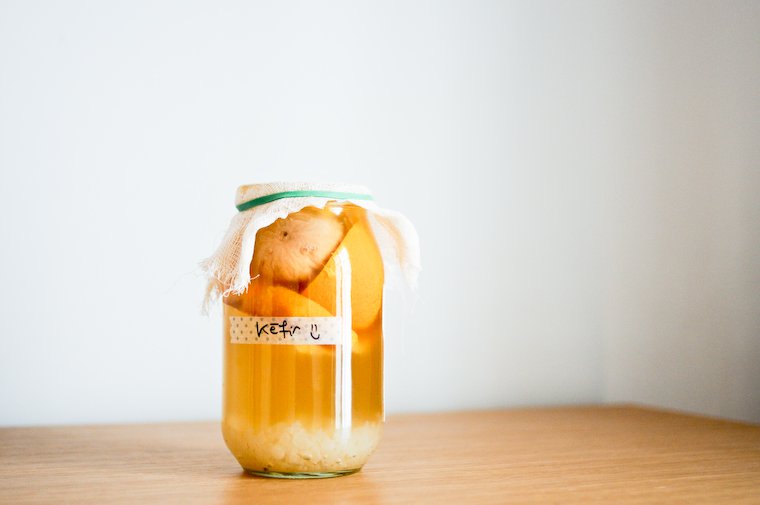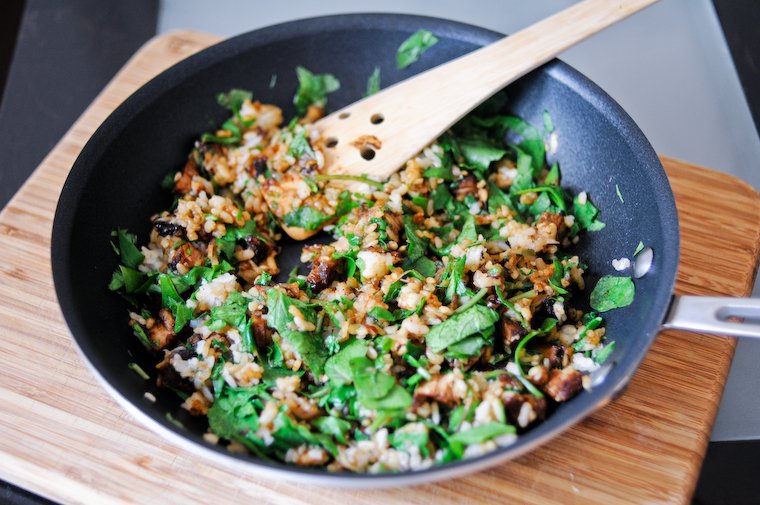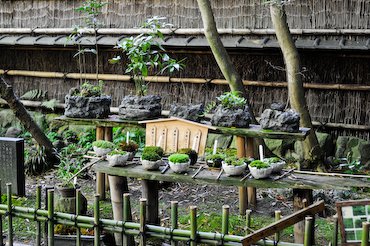Those of you who subscribe to my newsletter already know that I worked for a little while last month at Bob’s Kitchen, a (very good) vegetarian lunch restaurant and juice bar in the 3rd arrondissement.
The team had been hired to provide the food during a film festival that was held at Beaubourg, so they needed a few more hands on deck, and I seized this opportunity to gain a little pro cooking experience, to catch a behind-the-scenes glimpse at how such a restaurant works, and (perk of perks) to have lunch there every day for the duration of my employ.
I was extraordinarily happy with the experience, which left me with a new callus on my right index finger from chopping so many vegetables, a bunch of new friends, and a newly acquired dexterity at tying a scarf turban-style on my hair so none would fall into the signature “veggie stew.”
Also: water kefir grains.
What’s water kefir?
I was already familiar with milk kefir, a fermented milk beverage that is greatly popular in Central and Eastern Europe, and which I adore.
However, I had yet to be introduced to water kefir (also known as tibi or tibicos, and kéfir de fruits in French), a water-based fermented drink that is lightly effervescent, sweet and sour, and particularly refreshing.
The team at Bob’s Kitchen made regular batches of it to offer on the drinks menu, and this gave me a chance to taste (and fall under the spell of) it.
The key ingredient in the making of water kefir is a small quantity of water kefir grains, sometimes called Japanese water crystals. These bouncy and translucent pebbles are home to a culture of yeasts and friendly bacteria that thrive and multiply in sugared water: these symbiotic microorganisms essentially “digest” the sugar in the water, producing alcohol*, lactic acid and carbon dioxide, which results in a probiotic (and therefore health-promoting), delicious drink.
Marc, the co-founder of Bob’s Kitchen, offered to give me some of the grains to make my own kefir, and I could not have accepted with more enthusiasm. I figure one cannot have too many microorganisms proliferating in one’s kitchen, as long as they’re the friendly kind.
How to make water kefir
I follow the general instructions my coworker Anna gave me, but in researching other “recipes” online, I’ve noticed the method, and the proportions of grains to water to sugar vary to some extent from one source to the next, so the overall process is fairly forgiving.
But the idea is always this: you combine the kefir grains with sugar, filtered water, an organic lemon (or some other citrus, for acidity), dried fruits (for sugar and flavor; these must also be organic), and possibly spices, and let this mixture ferment at room temperature for a day or two before filtering, bottling, and starting over with a new batch.
It really is very simple and low-commitment, and you can experiment with different kinds of citrus and dried fruits (though lemon and fig are traditional), as well as spices, or try adding fresh fruit and herbs to the mix, too. I hear fresh cherries or strawberries give the kefir a rosy hue.
We have been drinking a glass every day at breakfast, and occasionally another one later in the day, especially when I get home on my bike and the uphill ride has made me thirsty, but I’m seeing the distinct possibility of using it in cocktails.
Unlike a natural starter for bread, it’s not possible to create your own kefir grains from scratch at home, so you have to obtain them from someone else. Traditionally, you would get them from a friend or relative or neighbor who would give them to you for free, but nowadays you can order them online in exchange for a small fee to cover shipping and handling (which is only fair). You can also check your local classifieds, or ask around — at your local health food store, for instance — as someone may know someone who can provide them.

* The resulting drink is therefore very faintly alcoholic, usually less than 1% by volume. Many sources indicate that it is fine for children or pregnant women to drink in moderation, but naturally you should decide for yourself.










